I have a server and a domain name on GoDaddy.
I want to create a backup for my files to be uploaded on Google Drive
So that all my files and my database have their data on Google Drive.
I use PHP and MySQL for my database
After some research, I found "Automatically backing up your web server files to GoogleDrive with PHP" and did what he said.
I have downloaded the files google-api-php-client from the backuptogoogledrive repository.
And I have a client ID, client secret and an authCode
I edited the setting.inc and I put my own client ID, client secret and authCode. I also put my MySQL username, password and hostname.
In this page backuptogoogledrive it should create a .tar.gz folder and this folder should contain my website files. Then, this folder should upload it to my Google Drive and do the same thing for my database.
<?php
set_time_limit(0);
ini_set('memory_limit', '1024M');
require_once("google-api-php-client/src/Google_Client.php");
require_once("google-api-php-client/src/contrib/Google_DriveService.php");
include("settings.inc.php");
if($authCode == "") die("You need to run getauthcode.php first!\n\n");
/* PREPARE FILES FOR UPLOAD */
// Use the current date/time as unique identifier
$uid = date("YmdHis");
// Create tar.gz file
shell_exec("cd ".$homedir." && tar cf - ".$sitedir." -C ".$homedir." | gzip -9 > ".$homedir.$fprefix.$uid.".tar.gz");
// Dump datamabase
shell_exec("mysqldump -u".$dbuser." -p".$dbpass." ".$dbname." > ".$homedir.$dprefix.$uid.".sql");
shell_exec("gzip ".$homedir.$dprefix.$uid.".sql");
/* SEND FILES TO GOOGLEDRIVE */
$client = new Google_Client();
// Get your credentials from the APIs Console
$client->setClientId($clientId);
$client->setClientSecret($clientSecret);
$client->setRedirectUri($requestURI);
$client->setScopes(array("https://www.googleapis.com/auth/drive"));
$service = new Google_DriveService($client);
// Exchange authorisation code for access token
if(!file_exists("token.json")) {
// Save token for future use
$accessToken = $client->authenticate($authCode);
file_put_contents("token.json",$accessToken);
}
else $accessToken = file_get_contents("token.json");
$client->setAccessToken($accessToken);
// Upload file to Google Drive
$file = new Google_DriveFile();
$file->setTitle($fprefix.$uid.".tar.gz");
$file->setDescription("Server backup file");
$file->setMimeType("application/gzip");
$data = file_get_contents($homedir.$fprefix.$uid.".tar.gz");
$createdFile = $service->files->insert($file, array('data' => $data, 'mimeType' => "application/gzip",));
// Process response here....
print_r($createdFile);
// Upload database to Google Drive
$file = new Google_DriveFile();
$file->setTitle($dprefix.$uid.".sql.gz");
$file->setDescription("Database backup file");
$file->setMimeType("application/gzip");
$data = file_get_contents($homedir.$dprefix.$uid.".sql.gz");
$createdFile = $service->files->insert($file, array('data' => $data, 'mimeType' => "application/gzip",));
// Process response here....
print_r($createdFile);
/* CLEANUP */
// Delete created files
unlink($homedir.$fprefix.$uid.".tar.gz");
unlink($homedir.$dprefix.$uid.".sql.gz");
?>
The problem now is that I have two folders for the database and there's no problem on it, and a second folder for the files. But this folder doesn't have any files on it.
How can I solve this problem?
// User home directory (absolute)
$homedir = "/home/mhmd2991/public_html/"; // If this doesn't work, you can provide the full path yourself
// Site directory (relative)
$sitedir = "public_html/";

